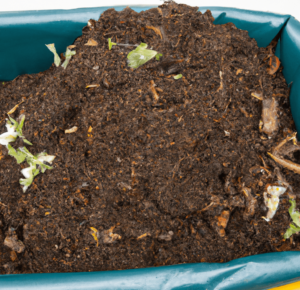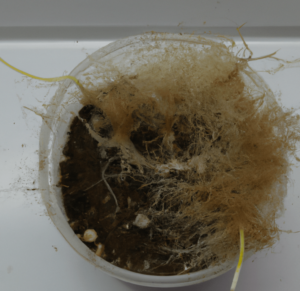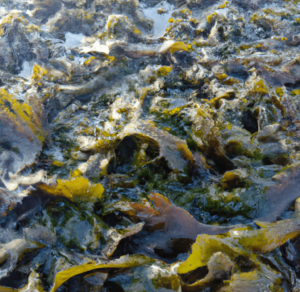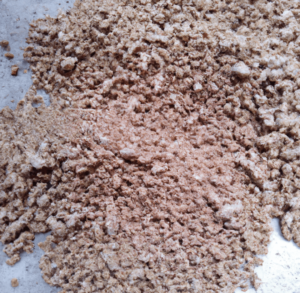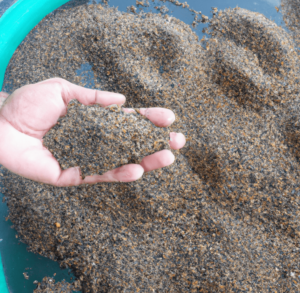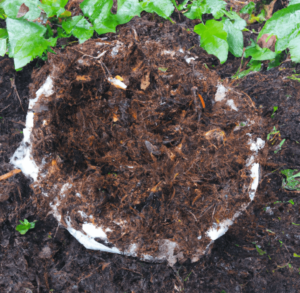A well-kept garden can boost a property’s value in addition to adding to its attractiveness. Fertilization is one of the most crucial components of gardening, and understanding and choosing the right fertilizers for your garden can make the difference between a flourishing and a disappointing one. Anyone into gardening and who needs insight on this topic can read on!
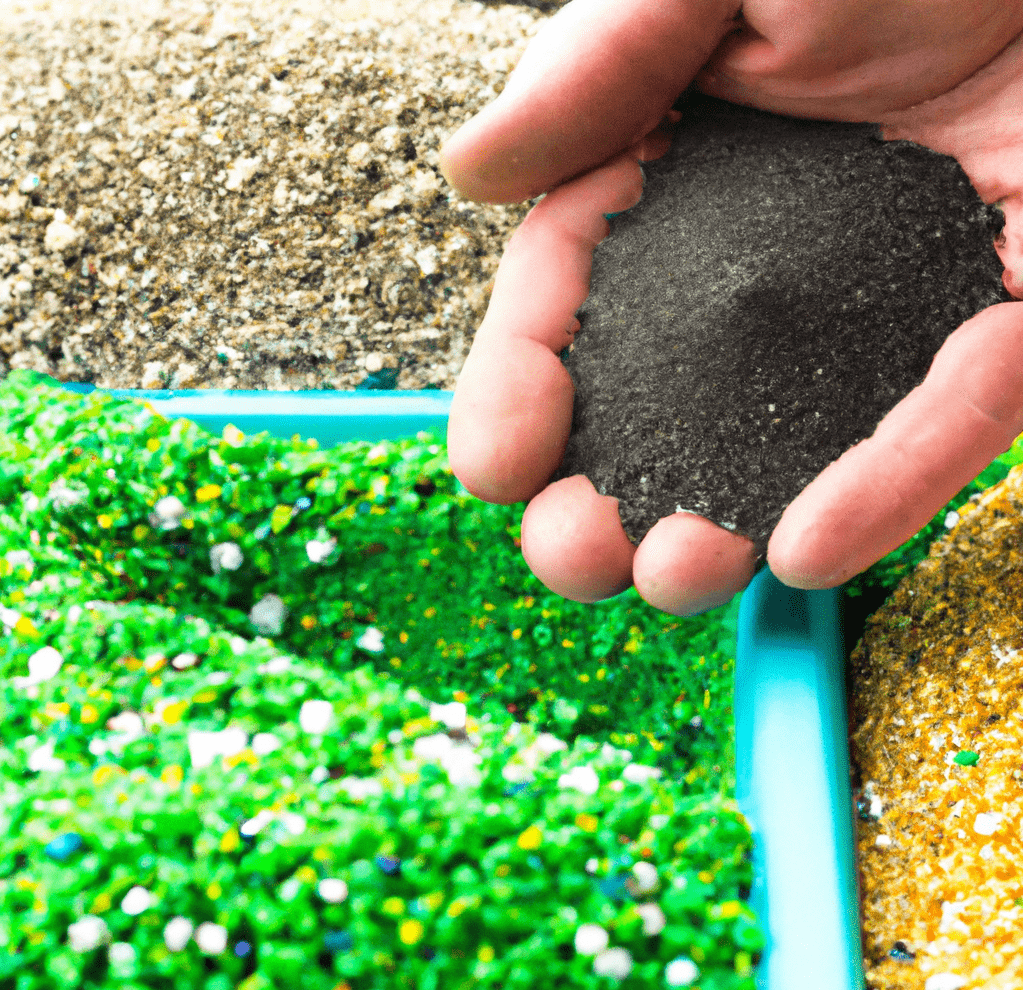
Types of Fertilizers
In order to give plants the nutrients they need for growth and development, fertilizers are compounds that are incorporated into the soil. Among these nutrients, potassium, phosphorus, and nitrogen are among the most crucial. The particular needs of the plants, the makeup of the soil, and the environment all influence the sort of fertilizer that is utilized and understanding and choosing the right fertilizers for your garden is key:
- Fertilizer in liquid form is applied directly to the soil or to plant foliage after being dissolved in water. They are simple to use and swiftly absorbed by the plants, giving them the essential nutrients in a brief amount of time.
- Nitrogen is a crucial ingredient for plant growth, and nitrogen fertilizers are specially made to give plants a lot of this vital nutrient.
- Phosphorus is an additional necessary nutrient for root development, flowering, and fruiting. Fertilizers with phosphorus are designed to provide plants with the right amounts of this nutrient.
- Fertilizers with potassium are specially made to give plants the required quantities of this nutrient. Potassium is essential for the general health and vigor of plants.
- Compost, manure, and bone meal are examples of natural materials used to make organic fertilizers. They offer plants a well-balanced mixture of nutrients and are a fantastic option for gardeners who favor organic and sustainable practices.
Organic Fertilizers (e.g. Compost, Bone Meal)
When looking for a natural alternative after learning about the role of fertilizers in gardening, gardeners and lawn care lovers frequently choose organic fertilizers. Compost, bone meal, cottonseed meal, and other organic matter are examples of natural materials used to make organic fertilizers.
When understanding and choosing the right fertilizer for your garden, organic fertilizers give plants a slow-release source of nutrients that promotes healthy, sustainable growth. Organic fertilizers enhance soil structure, encourage the development of advantageous microbes, and boost the soil’s capacity to hold moisture by adding organic matter to the soil.
As a result, the health of the soil is improved, which benefits the plants growing there. For example, a cottonseed meal is a well-liked option for maintaining lawns since it offers a slow-release supply of nitrogen that encourages the growth of healthy grass.
Inorganic Fertilizers (e.g. Synthetic Fertilizers, Slow-Release Fertilizers)
Chemical-based products called inorganic fertilizers, commonly referred to as synthetic or slow-release fertilizers, are used to replace the nutrients in the soil for plant growth. Inorganic fertilizers are manufactured from minerals and chemical compounds, as opposed to organic fertilizers, which are made from natural materials.
Inorganic fertilizers often offer concentrated forms of vital plant nutrients like nitrogen and phosphorus. In order to ensure that their plants receive the proper mix of nutrients for optimal growth, this enables farmers and gardeners swiftly apply specific fertilizers to the soil.
Two of the most crucial nutrients for plants are phosphorus and nitrogen, and inorganic fertilizers can supply these in a way that is readily assimilated by plants. This may encourage rapid growth and increase crop yields. However, it’s crucial to utilize inorganic fertilizers correctly and in the right quantities because the dangers of overfertilizing include soil degradation and environmental issues. Additionally, inorganic fertilizers have the potential to contaminate groundwater, harm aquatic habitats, and contaminate drinking water which is why understanding and choosing the right fertilizers for your garden is so important.
Comparison of Pros and Cons of Each Type
When understanding and choosing the right fertilizers for your garden, you need to choose the best fertilizer for your needs, it is crucial to be aware of the advantages and disadvantages of each type of fertilizer.
The advantages of employing organic fertilizers include enhancing soil structure and fostering advantageous microbes, which results in better soil health. In general, organic fertilizers are healthy for both humans and the environment because they don’t include any potentially dangerous chemicals.
The drawbacks of employing organic fertilizers include the possibility of higher costs and a potential reduction in the amount of immediate nourishment provided to plants compared to synthetic fertilizers. Furthermore, certain organic fertilizers can be cumbersome and challenging to apply, especially in big gardens.
On the other hand, the advantages of utilizing synthetic fertilizers over organic ones are their quick action and capacity to deliver a higher concentration of nutrients. Additionally, synthetic fertilizers are typically more economical than organic ones.
The drawbacks of utilizing synthetic fertilizers include the possibility of environmental and human health risks due to the chemicals they may contain. Synthetic fertilizers can also cause the soil to deteriorate and can harm the good microorganisms that exist in the soil.
Then there is the ease of use and ability to give plants a slow-release source of nutrition are two benefits of employing ground fertilizers. Since they don’t contain any dangerous chemicals, ground fertilizers are also typically harmless for both individuals and the environment. The drawbacks of utilizing ground fertilizers include the fact that they may be more challenging to apply in expansive gardens and may not give plants the same quick nutrition as liquid fertilizers. Furthermore, the efficacy of ground fertilizers can be diminished by severe rain.
As for liquid fertilizers, they’re simple to use, give plants nourishment quickly, and are easily absorbed by roots. Since they don’t contain any dangerous chemicals, liquid fertilizers are also often safe for both humans and the environment. However, liquid fertilizers can be more expensive than other types of fertilizer and can not give plants as much long-term nutrition, which is one of their drawbacks. Liquid fertilizers can sometimes be trickier to precisely measure and apply, especially in big gardens.
Factors to Consider When Choosing Fertilizers
Now that you’re learning about understanding and choosing the right fertilizers for your garden, think of the following factors;
- Fertilizer Type: Both organic and inorganic fertilizers have benefits and drawbacks. Organic fertilizers deliver nutrients to plants gradually and steadily, although they may take longer to see effects than inorganic fertilizers. Inorganic fertilizers provide nutrients an immediate boost, but if they are not applied properly, they can quickly wash away.
- Plant Type: Since different plants have varied nutrient needs, it’s critical to select a fertilizer that offers the ideal ratio of nutrients for the plants you want to cultivate. For instance, you’ll need a fertilizer that gives a higher amount of nitrogen if you want to produce vegetables, but you’ll need a fertilizer that provides a higher amount of phosphorus if you want to grow flowers.
- Nutritional Needs: Depending on the growth stage they are in, the soil type, and the climate where they are cultivated, your plants will require different nutrients. Nitrogen, phosphorous, and potassium are some typical nutrients that plants require.
Soil pH and Nutrient Deficiencies
Your garden’s soil’s pH and nutrient content can have a big impact on how effective your fertilizer is as you are understanding and choosing the right fertilizers for your garden. Understanding the pH and nutrient levels in your soil and how they can be affecting the health of your plants will help you choose the best fertilizer.
The availability of nutrients to plants can be significantly impacted by soil pH, which is a measurement of the soil’s acidity or alkalinity. Important nutrients like nitrogen, phosphate, and potassium may not be as readily available in soils with pH levels that are too high or too low.
A soil test can assist identify the pH of your soil and whether it needs to be adjusted in order to encourage healthy plant growth if you see nutrient deficiencies in your plants. You can add lime to your soil to raise the pH and boost the availability of nutrients for plants if it is excessively acidic. If your soil is very alkaline, you can apply sulfur to lower the pH and increase the availability of nutrients.
Understanding your soil’s unique nutrient deficits is crucial, in addition to knowing the pH of your soil. It’s critical to pick a fertilizer that addresses the exact nutritional deficits in your soil because fertilizers are designed to supply various ratios of nitrogen, phosphorous, and potassium as well as other vital micronutrients. Compost and other organic fertilizers can increase your soil’s nutrient levels and encourage the growth of healthy plants.
You may enhance soil structure and encourage the development of advantageous microbes, which will increase soil health and nutrient availability, by adding organic matter to your soil. You can select the ideal fertilizer and encourage healthy plant growth by knowing the pH and nutrient levels in your soil.
Plant Type and Growth Stage
The kind of fertilizer your garden or lawn needs will be greatly influenced by the kind of plants you have there and where they are in their growth cycles. Understanding and choosing the right fertilizers for your garden means that you also understand:
- Plant Type: Different plant types, such as fruits, flowers, trees, and shrubs, have various dietary needs. As an illustration, vegetables normally need more nitrogen for optimum growth, whereas flowers typically need more phosphorus.
- Growth Stage: Your plants’ nutritional requirements will vary depending on where they are in their growth cycle. For instance, compared to mature plants, seedlings, and immature plants will need a different balance of nutrients. Choosing the proper fertilizer and avoiding issues like stunted growth or low yields can be made easier by being aware of the particular requirements of your plants at each stage of growth.
Climate and Weather Conditions
A law n’s health and aesthetics are influenced by the soil, fertilizer, and lawn. These features, as well as the development and upkeep of a lawn, are all subject to the effects of weather and climate and are important in understanding and choosing the right fertilizers for your garden.
For instance, hot, dry weather can result in compacted, overly dry soil that makes it difficult for roots to absorb moisture and nutrients. This can be fixed by using organic fertilizers, which help to restore soil structure and increase soil health. Compost and other organic materials are used to create organic fertilizers, which gradually release nutrients to give plants a consistent supply of nutrition.
Additionally, phosphorus, which is crucial for root development and general plant health, is frequently found in organic fertilizers. Phosphorus is also advantageous for lawns since it encourages the development of deep roots and keeps grass from turning yellow or brown.
Personal Preferences and Gardening Goals
Now that you’re understanding and choosing the right fertilizers for your garden more and more, you need to take your preference and goals into consideration:
- The sort of fertilizer you require will depend in part on the type of soil you have. For instance, if your soil is sandy, you might need to use a fertilizer that releases nutrients gradually, as nutrients in sandy soil might easily wash away.
- You may select a fertilizer that offers the ideal mix of nutrients for your plants’ best growth and health by knowing the individual nutritional needs of your particular plants. For instance, if your plants are deficient in nitrogen, you might want to use a nitrogen-There are several different types of fertilizers, including liquid, granular, and slow-release. Depending on your own tastes and the kind of plants you have, you can choose one or the other. While granular fertilizers can offer a slow, constant release of nutrients over a longer length of time, liquid fertilizers are frequently simpler to apply and can offer a fast boost of nutrients.
How to Choose the Right Fertilizer
Understanding and choosing the right fertilizers for your garden has led to this moment: choosing the right fertilizer! Keep the following tips in mind:
- Think About Your Plants’ Needs: The sort of fertilizer your plants require depends on both the type of plants you have and the stage of growth they are in. As an illustration, vegetables normally need more nitrogen, whereas flowers typically need more phosphorus.
- Know Your Soil Type: Your plants’ ability to absorb nutrients rapidly and their ability to survive for a long time can be impacted by the type of soil you have, such as clay, sand, or loam. For instance, you might need to use a fertilizer that releases nutrients gradually and steadily if your soil is sandy.
- Find sources of nutrients: Different fertilizer types offer varying amounts of nutrients. For instance, a cottonseed meal might be a wonderful option for adding nutrients to your soil since it is a natural source of potassium, phosphorus, and nitrogen.
- Pick Your Fertilizer Type: There are several various types of fertilizers, including liquid, granular, and slow-release. When choosing a fertilizer form, take into account the kinds of plants you have, as well as your own preferences and gardening objectives.
- Read Labels and Reviews: Before purchasing fertilizer, be sure it offers the proper ratio of nutrients for your plants and the type of soil you have by reading the label and any reviews that may be available. You can also seek advice from horticulturists or gardening professionals in your area.
Understanding the Nutrient Ratios (N-P-K) and What They Mean for Your Plants
It’s critical to comprehend the functions of the three main nutrients-nitrogen (N), phosphorus (P), and potassium-when fertilizing your plants and soil (K) when you’re understanding and choosing the right fertilizers for your garden.
The “N-P-K ratio” on fertilizer labels is a group of numbers that normally represents these nutrients. The percentage of each nutrient in the fertilizer is indicated by the N-P-K ratio. An N-P-K fertilizer, for instance, has a composition of 10% nitrogen, 5% phosphorus, and 5% potassium.
These nutrients each have a special function in the growth and development of plants. Nitrogen is necessary for plant growth and aids in the production of vibrant green, healthy leaves. For the growth of roots, flowers, and fruits, phosphorus is essential. Potassium is crucial for the overall health of plants since it helps to control water balance, fortify stems, and boost disease resistance. The N-P-K ratio in organic fertilizers can change because these fertilizers are created from naturally occurring materials like compost and bone meal, which have different concentrations of these vital elements.
Reading and Interpreting Fertilizer Labels
Understanding and choosing the right fertilizers for your garden also includes reading and interpreting product labels. When reading fertilizer labels, bear the following points in mind:
- While synthetic fertilizers are manufactured from chemicals, organic fertilizers are made from natural elements. Both fertilizers can give your plants the nutrients they need, but organic fertilizers also contribute organic matter to the soil, which over time can enhance soil structure and fertility.
- Nitrogen, phosphorous, and potassium are the three primary nutrients found in fertilizer. The percentage of each of these nutrients in the fertilizer will be listed on the label. A fertilizer with the label “10-10-10” has 10% nitrogen, 10% phosphorus, and 10% potassium, for instance.
- Fertilizers can be sprayed on the soil’s surface or incorporated into the ground during application. While some fertilizers come in granular or powder form, others are intended to be used as liquids. Choose a fertilizer that is appropriate for your plants and the application method you choose.
- Specific plant varieties may be considered when formulating some fertilizers, such as lawns, flowers, or vegetables. Make sure the fertilizer you select is suitable for both the type of soil you have and the plants you are growing.
- The label will also list the fertilizer’s suggested application rate. This informs you of the amount of fertilizer to use per area units, such as a square foot or an acre. To avoid overfertilizing, which can harm your plants and the environment, make sure to stick to the advised application rate. You may choose the ideal fertilizer for your plants and promote their robust, healthy growth by comprehending the information on the label.
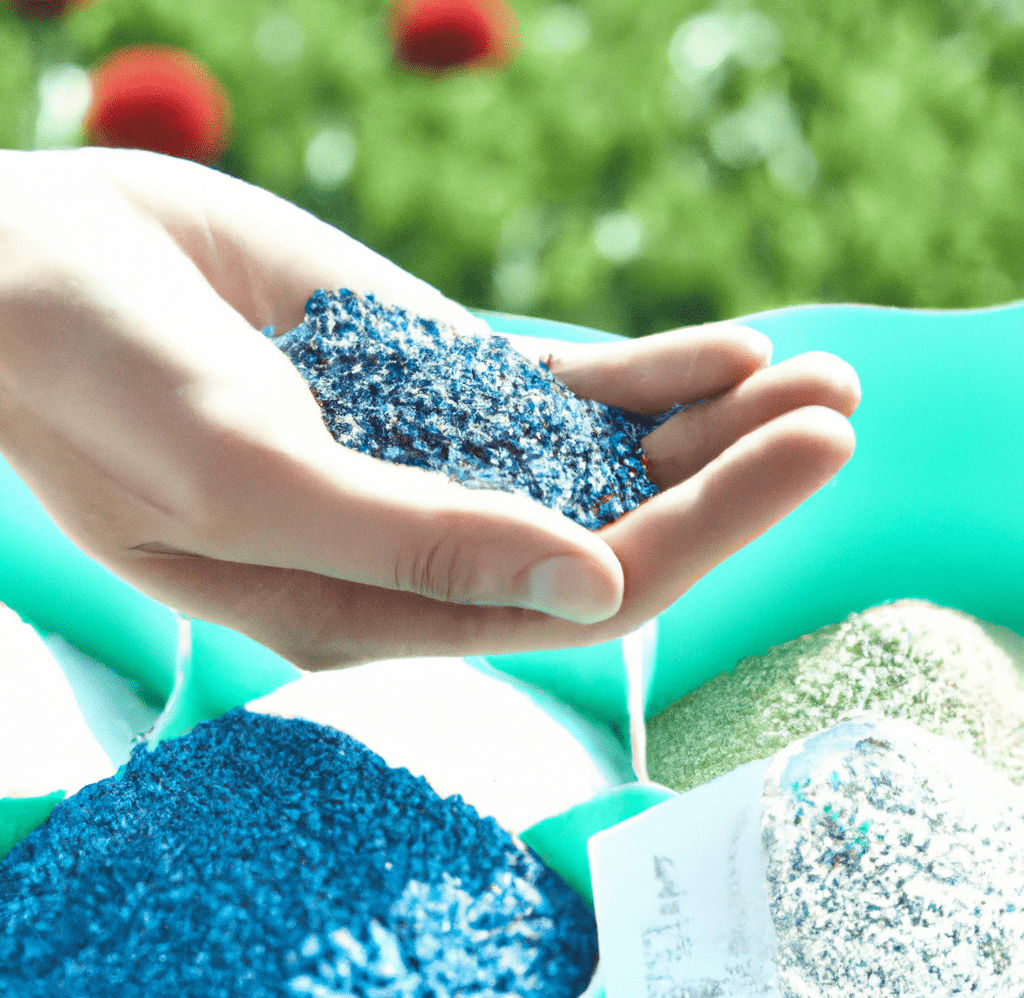
Consulting With a Local Expert or Gardening Professional
A local expert or gardening specialist can be quite helpful when it comes to fertilizing your lawn and guaranteeing the best results. Even after understanding and choosing the right fertilizers for your garden, these experts can offer advice and recommendations depending on your particular soil type, climate, and lawn needs because they have a plethora of expertise and experience.
Working with a pro will allow you to discuss your lawn’s objectives, such as increased growth, improved color, or less disease, and get specialized advice on the finest organic fertilizers and formulations to employ. By doing so, you can verify that you are using the appropriate items to get the results you want and that your decisions are well-informed.
On the basis of your region’s environment and weather, a specialist may also advise you on the right amount of fertilizer to use and the ideal time to apply it. They can also point out any soil problems, including a deficiency in nutrients, and suggest solutions.
How to Apply Fertilizers
After understanding and choosing the right fertilizers for your garden, you can apply them by doing the following:
- Test Your Soil: It’s a good idea to test your soil to determine what nutrients it contains and what nutrients your plants may require before applying fertilizer. Using the proper fertilizer and avoiding overfertilizing, which can harm your plants and the environment, will be made it easier by doing this.
- Select the Correct Fertilizer: Choose a fertilizer that has the proper balance of nutrients, such as nitrogen, phosphorous, and potassium, based on the results of your soil test and the requirements of your plants.
- Observe Label Directions: Make sure you thoroughly read the instructions on the label before applying fertilizer. This will guarantee that you apply fertilizer correctly and in the proper amount.
- Employ liquid fertilizers: Although liquid fertilizers are simple to use, it’s crucial to not use too much of them. Environmental issues might result from applying too much liquid fertilizer since it can wash away or leak into the groundwater.
- Consider adding compost or well-rotted manure to your garden if your soil is deficient in organic matter. This will enhance soil structure and give your plants a long-term source of nutrients.
Methods of Application (e.g. Granular, Liquid, Foliar)
Granular, liquid and foliar applications are just a few of the ways you can fertilize your lawn or garden:
- Granular Fertilizers: Also known as dry, crystalline, or granulated materials, granular fertilizers can be dusted on top of or mixed with the soil. Due to their simplicity of usage and gradual release of nutrients over time, they are a fantastic option for lawns, wide areas, and garden beds.
- Liquid Fertilizers: Liquid fertilizers are liquid concentrates that can be applied to the soil or leaves of plants after being diluted with water. They are a wonderful option for gardeners who want to apply fertilizer quickly and easily, as well as for plants that need a rapid source of nutrients since they are growing swiftly.
- Foliar fertilizers are given directly to plant leaves, where they are then absorbed by the foliage. They are a fantastic option if you want to supply an immediate source of nutrients for quick results or if your plants are having trouble absorbing nutrients from the soil.
Proper Timing and Frequency of Application
The timing and frequency of application are crucial considerations when fertilizing your lawn and garden and are a big part of understanding and choosing the right fertilizers for your garden. Numerous issues, such as plant stress, slowed development, and greater susceptibility to disease can result from improper timing or overfertilizing.
For instance, it can be hazardous to fertilize your plants when they are dormant because the nutrients won’t be used properly. On the other hand, fertilizer can assist support healthy plant development and promote vigorous, lush growth when applied at the proper time, such as during active growth periods.
The frequency of fertilizer applications affects the health of the plant as well. Over-fertilizing can result in the buildup of extra nutrients in the soil, which can be bad for the environment and plants. Conversely, inadequate fertilization can lead to nutrient deficits and weakened plant health.
Safety Precautions and Guidelines
As you learn about understanding and choosing the right fertilizers for your garden, it’s crucial to observe safety precautions and standards. If handled incorrectly, fertilizer can be dangerous, especially concentrated liquid fertilizers with high nitrogen content. A crucial ingredient for plant growth, nitrogen, can be hazardous to plants in excessive doses and, if not used appropriately, can contaminate groundwater and surface water.
- It’s crucial to adhere to the manufacturer’s instructions and suggested application rates while applying fertilizer, particularly when utilizing concentrated liquid fertilizers.
- When handling fertilizer, you should also use gloves and safety goggles.
- You should also keep fertilizer in a labeled, secure container away from kids and animals.
- In order to protect your plants and the environment, it’s also critical to keep an eye on the soil’s nutrient balance and refrain from overfertilizing, which can cause an accumulation of surplus nutrients in the soil.
Bottom Line: Understanding and Choosing the Right Fertilizers for Your Garden
understanding and choosing the right fertilizers for your garden is essential for maintaining healthy development and the best results. Fertilizer is a crucial element of healthy soil because it gives plants the nutrients they require to develop and thrive. It is crucial to take into account aspects like soil type, climate, and plant requirements while choosing a fertilizer.
FAQs on Understanding and Choosing the Right Fertilizers for Your Garden
Why is fertilizer essential for gardening?
Fertilization is an important part of gardening since it gives plants the nutrients they need for growth and development. A properly fertilized garden can raise a property’s value and improve its appeal.
What are the primary components of fertilizers?
Essential minerals for plant growth and development, including potassium, phosphorus, and nitrogen, are found in fertilizers.
What do liquid fertilizers consist of?
After being dissolved in water, liquid fertilizers are administered directly to the soil or to plant foliage. They are simple to use and swiftly taken up by plants, giving them vital nutrients in a short period of time.
What are fertilizers containing nitrogen?
Fertilizers containing nitrogen are specifically designed to give plants a lot of this essential component for plant growth.
What are fertilizers containing phosphorus?
Phosphorus fertilizers are made to give plants the ideal quantity of this essential nutrient for root growth, flowering, and fruiting.
What are fertilizers with potassium?
Potassium fertilizers are designed to provide plants with the necessary levels of this crucial nutrient for their overall health and vigor.
What do organic fertilizers consist of?
Organic fertilizers give plants a well-balanced variety of nutrients by using natural ingredients like compost, manure, and bone meal. They are a fantastic choice for gardeners who favor sustainable and organic methods.
What advantages do utilizing organic fertilizers offer?
Plants are given a slow-release source of nutrients via organic fertilizers, which encourages healthy, long-lasting development. They improve soil structure, promote the growth of advantageous bacteria, and increase the soil’s ability to retain moisture.
What do inorganic fertilizers consist of?
Chemical-based compounds called inorganic fertilizers, commonly referred to as synthetic or slow-release fertilizers, are used to replenish the nutrients in the soil for plant growth. They are produced using chemical and mineral components.
What advantages can inorganic fertilizers offer?
Inorganic fertilizers allow farmers and gardeners to quickly apply particular fertilizers to the soil for optimal growth by providing concentrated forms of vital plant nutrients like nitrogen and phosphorus.
What disadvantages come with utilizing inorganic fertilizers?
Excessive usage of inorganic fertilizers can damage the environment and the soil. Additionally, they might taint drinking water, destroy aquatic habitats, and contaminate groundwater.
What factors should I take into account while choosing the best fertilizer for my garden?
The needs of your plants, the type of soil you have, the sources of nutrients, the type of fertilizer, and the nutritional ratios (N-P-K) listed on the label should all be taken into account when choosing the proper fertilizer for your garden. Prior to making a purchase, take sure to read product labels and reviews and, if necessary, seek advice from a horticulturist or gardening expert.
How can I determine what kind of fertilizer my plants require?
Your plants’ type and growth stage will determine the sort of fertilizer they require. Vegetables, for instance, normally require more nitrogen, but flowers typically require more phosphorus.
How does my choice of fertilizer depend on the type of soil I have?
Your plants’ capacity to absorb nutrients and their survival may be impacted by the sort of soil you have. For instance, you might need to use a fertilizer that distributes nutrients gradually if your soil is sandy to stop them from washing away.
What varieties of fertilizers are there?
Liquid, granular, and slow-release fertilizers are among the various forms of fertilizers.
What does the N-P-K ratio indicate for my plants and what does it mean?
The percentages of nitrogen (N), phosphorous (P), and potassium (K) in fertilizer are indicated by the N-P-K ratio, which is a set of figures found on fertilizer labels. These nutrients have specialized roles in a plant’s growth and development, such as helping to produce healthy leaves (nitrogen), encouraging the growth of roots and fruit (phosphorus), and improving the health of the plant as a whole (potassium).
What should I consider while I read the labels on fertilizer products?
When reading fertilizer labels, take into account the type of fertilizer (organic vs. synthetic), the proportion of the three primary nutrients (nitrogen, phosphorus, and potassium), the method of application, the particular plant variety for which the fertilizer is designed, and the recommended application rate. Make sure to adhere to the recommended application rate to prevent overfertilizing.
Can I consult professionals to help me choose the best fertilizer?
If you need assistance choosing the best fertilizer for your garden, you can consult horticulturists or gardening experts in your area.


